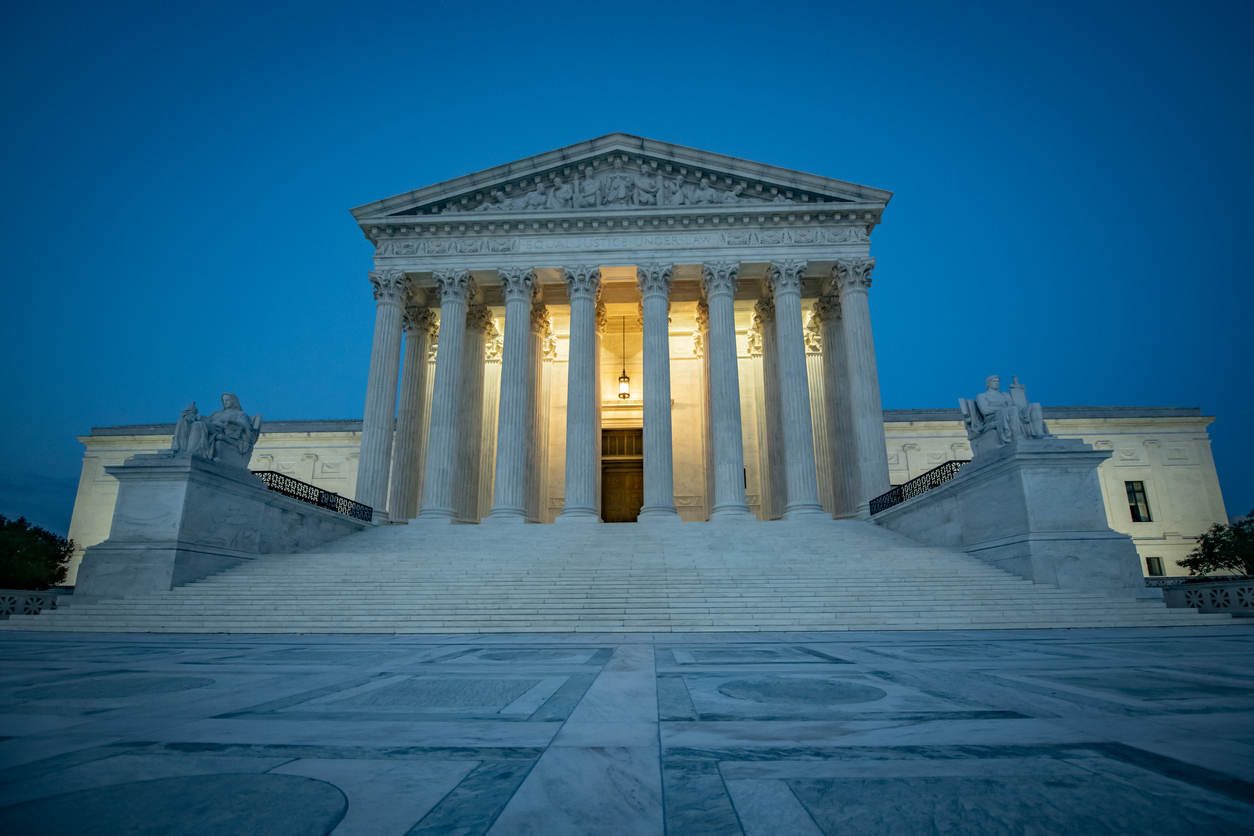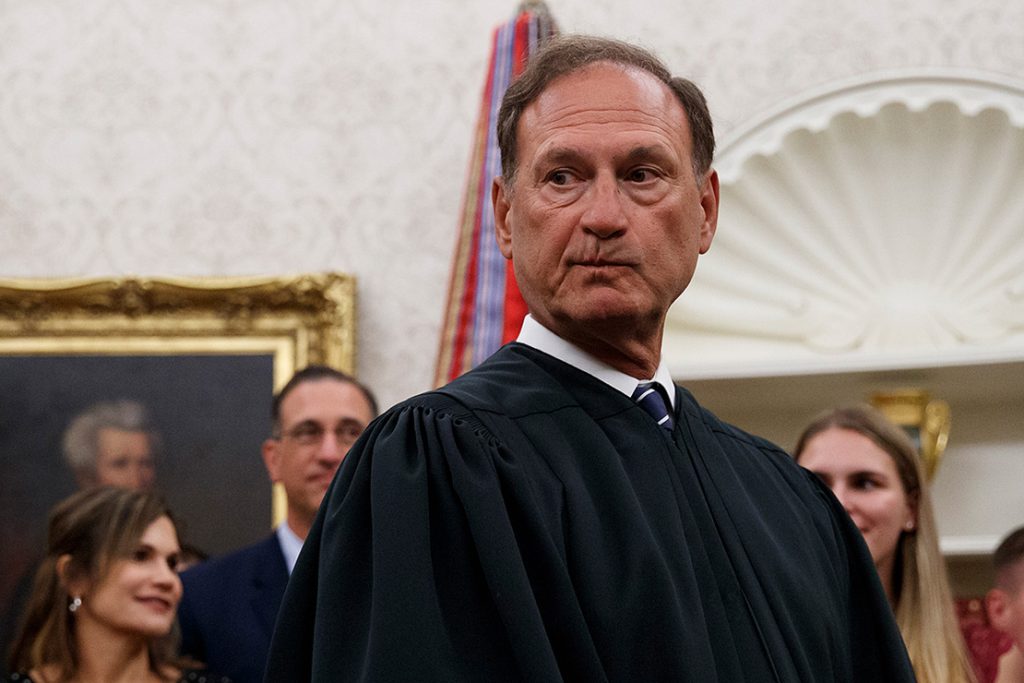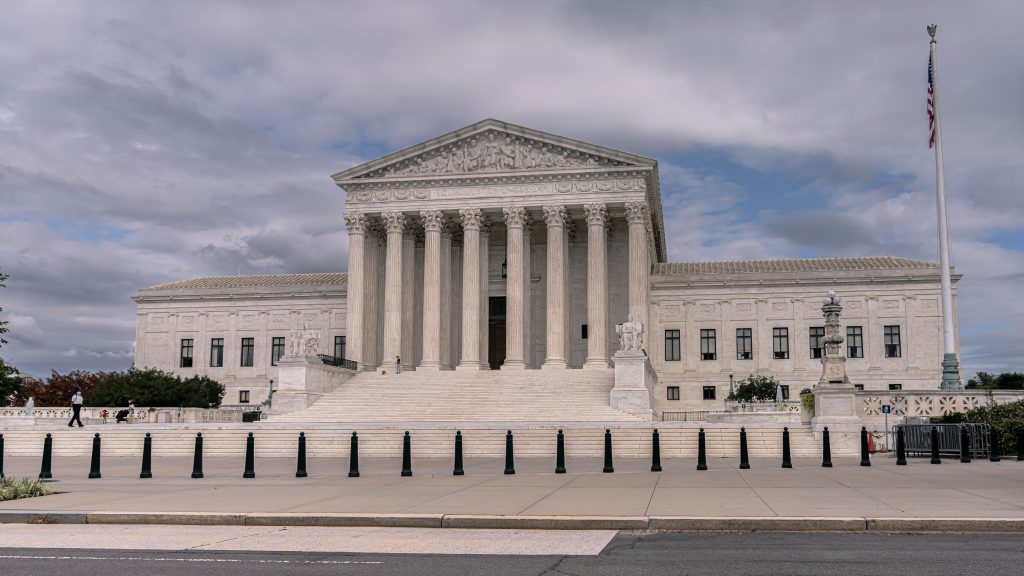
29 Aug The Unexpected Impact of Dobbs On Criminal Justice: Part II
My wife and I welcomed our first child into the world 19 years ago. It was a beautiful, sunny Friday afternoon in New York City, and my wife and son spent their first night together in a room with another first-time mother and her child. In fact, all the new mothers at New York Hospital were sharing rooms that September weekend, except for two.
The first was a wealthy woman who was in a huge, private suite at the end of the hall bedecked with enough flowers to send everyone to the allergy ward. The other mother in a private room really wasn’t alone. A member of the NYPD stood guard outside her room, with another police officer stationed inside. The new mother had her right wrist handcuffed to her bed and had to request the police officer to release her if she needed to use the bathroom. She was incarcerated at one of the many detention centers scattered around the five boroughs of New York.
The reality of that woman is lived by every pregnant person currently incarcerated in this country. And the ruling in Dobbs v Jackson Women’s Health Organization makes that already-bad situation much worse. Healthcare for incarcerated people is already something that is less than optimal. Dobbs promises to make neonatal care even worse, while limiting the right to terminate any unwanted or risky pregnancy.
Pregnancy has always been an issue inside of jails and prisons.
Prisons are and always have been segregated based on gender. Officials house biological women in different facilities from biological men, with different states and the federal government treating transgender, non-binary and intersex individuals differently depending on where they’re at.
For example, The Transgender Respect, Agency, and Dignity Act (SB 132) requires that the California Department of Corrections and Rehabilitation house transgender, non-binary and intersex individuals according to their gender identity. CDCR has identified 1,616 individuals who fit this profile as currently incarcerated in California. This is why many people would assume that pregnancy is not an issue with incarcerated people.
The reality is that an average of 58,000 pregnant individuals are admitted into jails, prisons and detention centers every year, according to a study by the Prison Policy Initiative. These individuals require specialized healthcare that is often lacking inside of correctional institutions. Pregnant inmates are more likely to miscarry, with the same study finding that miscarriage rates are 19% to 22% depending on the state, far exceeding the national average.

Even if you don’t enter prison pregnant, you can still end up pregnant inside.
In addition, there are incidents of women getting pregnant inside of prison. The conservative media has sensationalized reports of cis women incarcerated in New Jersey and California being raped and impregnated by transgender individuals in these states. A group called The Women’s Liberation Front is actually suing California over SB 132. In addition, male detainees allegedly raped a group of women detained in Indiana after a guard allowed them into the women’s unit in exchange for a $1,000 bribe.
Finally, there have always been reports of male correction officers having sex with women inmates, often against their will. The William & Mary Journal of Race, Gender and Social Justice reported in 2007 that while women constitute only 7% of prison populations, they account for over 46% of the reported sexual abuse. Clearly, women and transgender individuals can and do get pregnant while in prison.
The Dobbs decision has a direct impact on incarcerated people.
The decision in Dobbs seems pretty straightforward. Writing for the Court, Justice Samuel Alito simply said that abortion, while not illegal, is not part of the U.S. Constitution. So, he explained, Roe v Wade could no longer stand. As a result, the Supreme Court left it up to the states to determine whether and how to regulate abortion. However, nothing is truly ever that simple.
Unwanted Pregnancies
First, there is the issue of unwanted pregnancies. Some states that have banned abortion on demand have made exceptions for rape and incest. For example, the abortion bans in Oklahoma, Idaho and Indiana provide this kind of exception, while Mississippi allows for abortions in the case of rape but not incest, which would presumably allow women and transgender individuals incarcerated in these states to end their pregnancies if they were the result of rape.
But for women and transgender individuals incarcerated in Arkansas, Kentucky, Louisiana, Missouri, South Dakota, Texas, and Wisconsin, there is no such exception. So, if they become pregnant as a result of rape by a correctional officer or a fellow incarcerated person (such as a trans man in a male prison), then they must carry the pregnancy to term and presumably raise the child of their rapist.
Gestational Restrictions
Another problem that arises is one of getting an abortion before the expiration of the time set by a gestational restriction. For women in states like Ohio, Georgia, Idaho and Tennessee, this means getting an abortion before the expiration of 6 weeks from the date of impregnation. Considering how slowly most prisons work when it comes to treating the healthcare needs of inmates, this may be a tall order indeed.
Incarcerated people in Florida, Utah, North Carolina and Indiana may have it slightly better, with these states allowing abortions up to 15 weeks, 18 weeks, 20 weeks, and 22 weeks respectively. Still, this is going to require the pregnant inmate to get the approval of the warden or chief medical officer at the correctional facility to sign off on the abortion, schedule the procedure and find a clinic or hospital willing and able to perform the procedure.
Even in prison, the health of the mother might not be a factor.
The Prison Policy Initiative report pointed out the poor neonatal care in correctional institutions as well as the high rates of miscarriage. This means that pregnant inmates will be more at risk for complications than pregnant individuals in general. This can have deadly complications when the pregnant inmate is incarcerated in a state like Alabama or Arkansas that has no provision in their respective abortion ban for protecting the mother’s health.
For example, the New York Times reported on a Tennessean woman who had to travel to Georgia for an abortion after her obstetrician determined that the fetus was not viable and the continued pregnancy posed a threat to the mother’s health because it was leaking cerebral matter into the umbilical sac, which could cause sepsis.
While Tennessee has an exception for abortions in the case of a pregnancy that poses a risk to the mother’s health, no physician would perform one for fear of prosecution due to the vagueness of the statute. In the case of an incarcerated person in these states, the reality is that little or no consideration will go to their personal health.
Furthermore, many miscarriages require the use of abortion procedures like dilation and curettage, which removes tissue from the uterus. The failure to remove this tissue in the event of a miscarriage can lead to sepsis in the mother, rendering her sterile and often leading to her death. Will incarcerated people who miscarry while imprisoned in these states be able to get these procedures or will the correctional facilities allow them to die from malign neglect?

The location of BOP facilities alone makes the Dobbs decision dangerous.
The BOP currently reports a total inmate census of 157,739. Of these, the BOP placed the vast majority, 141,250, in federal correctional institutions, with most of the rest incarcerated in private prisons. Women represent 7% of the current federal prison population. As a result, there are only 27 facilities that house women out of a total of 122 federal correctional institutions nationwide.
This means that the BOP remains far more likely to place women in a facility outside of their home state than male federal inmates. For example, there are currently no federal correctional institutions for women in states like Massachusetts, Rhode Island, Oregon, North Carolina, Virginia, Alaska and New Mexico, requiring them to be housed often far outside their home states.
Incarcerated people housed at a federal correctional institution are subject to federal law. But when they have to leave the facility for medical treatment, this often occurs at hospitals and clinics that are subject to state law, with the exception of those housed at specialized medical institutions like FCI Butner in North Carolina. A pregnant individual at a federal correctional institution who may need an abortion as a result of a complication or miscarriage will go to a hospital outside of the facility.
The situation may arise where a women from a pro-choice state incarcerated at a federal institution in one that does not allow abortion or has significant restrictions. Nine of the 22 federal correctional institutions for women are located in states that have full or partial abortion bans. This is another example of how Dobbs impacts the rights of incarcerated people, as a state law will usurp a federal one, while restricting the rights of pregnant individuals who are not in the state of their own free will.
The Dobbs decision impacts women everywhere, especially those behind bars.
Women’s reproductive liberty is not something that should end at the gates of a prison. Just like religious freedoms, there are some rights that are truly inalienable, like against cruel and unusual punishment. By restricting access to abortion, Dobbs has consigned inmates in the states with outright bans to carrying the child of their rapists to term, since they cannot travel to a free state to get an abortion.
Similarly, Dobbs will further weaken an already poor system of healthcare in most correctional institutions. It would not surprise me to see the miscarriage rates spike in prisons beyond those already reported by the Prison Policy Initiative, as well as the number of cases in which pregnant inmates die as a result of complications caused by the inability to get an abortion to terminate pregnancies that pose risks to their health.
To read Part I of the Dobbs series by Fred Aaron, click here.

